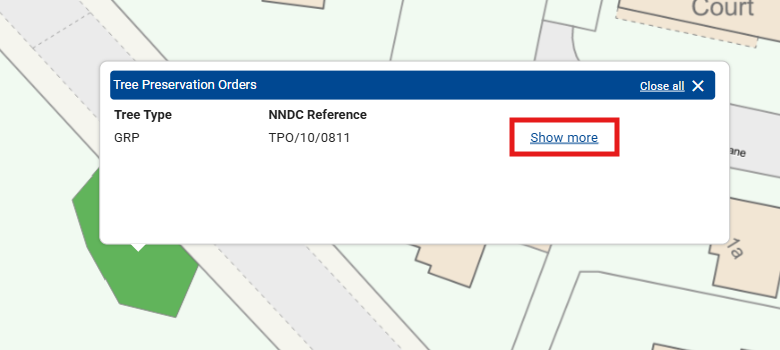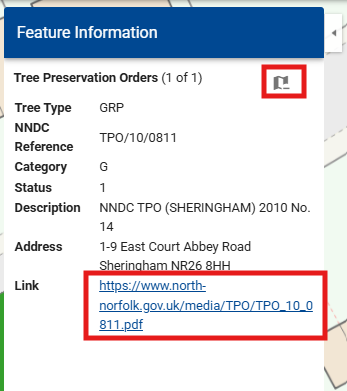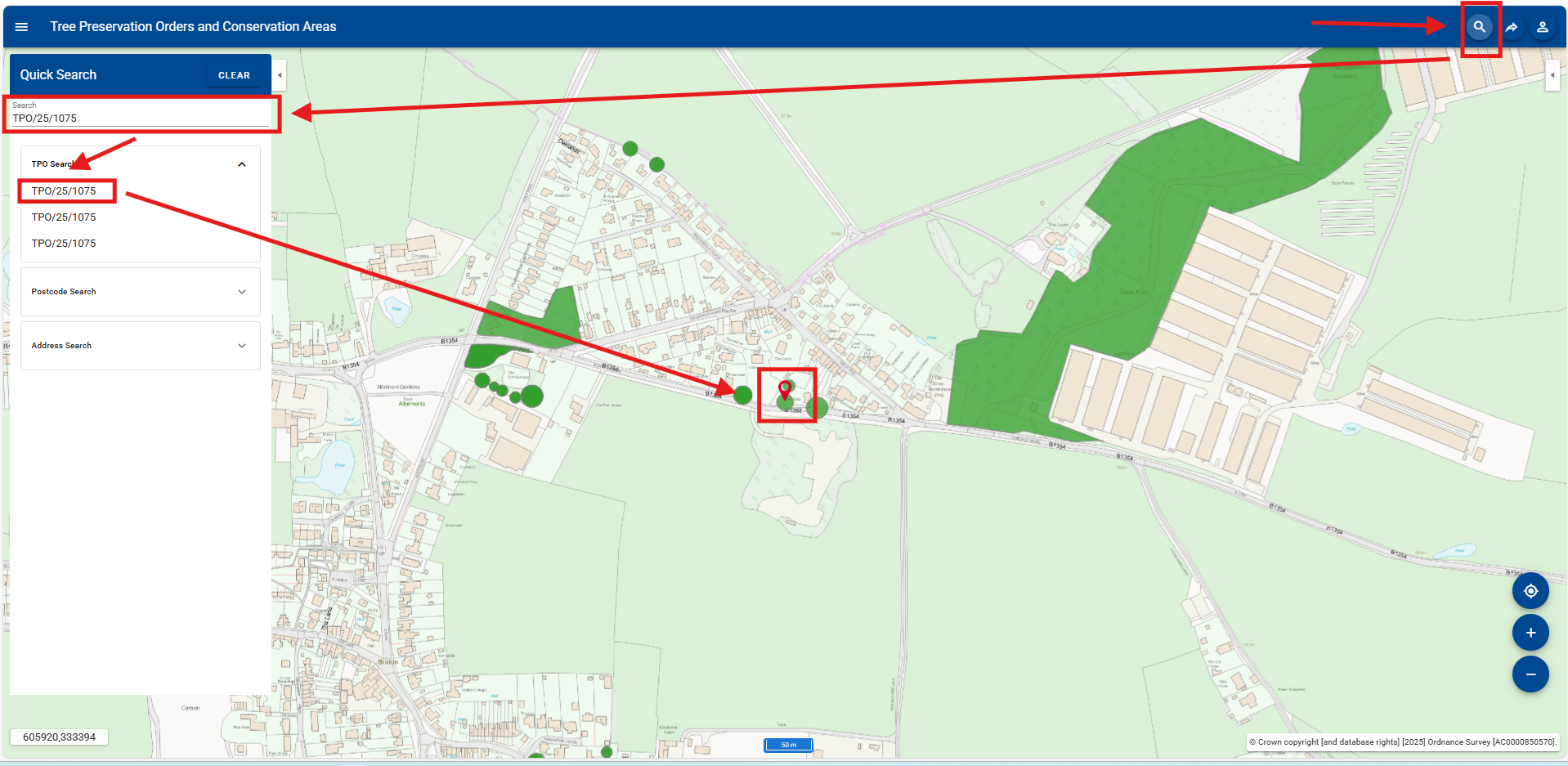Find out when your bins are due to be collected over Christmas and the New Year.
Trees and hedges
Find out if your tree is protected, learn how to undertake works lawfully, how to apply for permission, FAQs, how to report a problem and select appropriate planting.
On this page
The trees, hedgerows and woodlands in North Norfolk are incredibly valuable. They contribute significantly to the character of the local environment, the ecological value of the area, the health and wellbeing of our local communities and resilience to climate change.
We are lucky to have a wealth of public and private woodlands, some recognised as ancient ones. The Forestry Commission manages some of these areas, as does the district council, and others are privately owned.
Our green heritage is protected through Tree Preservation Orders (TPO) and designated Conservation Areas (CA), where a single tree, group of trees or woodland can be protected.
If you want to carry out work on a tree, you need to find out if it is protected and you may need to formally apply to the Council for the tree works.
Disclaimer: It is a criminal offence to fell or prune protected trees without permission from the Council.
Find out if my tree is protected
Use our web map to view Tree Protection Orders and Conservation Areas in North Norfolk:
- The map will open with Tree Preservation Orders and Conservation areas activated.
- To view information on these, pan to the feature of interest and click on it. This will open a pop-up. Select Show more to open the feature information in the left pane.

- In the feature information pane, you can also follow a link to the TPO document or highlight the record in question.

- You can search for a Tree Preservation Order or an address using the Search Tool in the top right corner. You can only search for a Tree Preservation Order using the reference number, which is in this format: TPO/**/****.

- To turn the map layers on or off, select the Main Menu drop-down in the top left corner, then click on My Data.

- Expand a group by using the down arrow or toggle layers on or off using the box. You must close the My Data pane using the side arrow to interact with the map layers again.

Tree Preservation Orders and trees in conservation areas - GOV.UK
Tree Preservation Order (TPO)
Local councils in England can make a Tree Preservation Order to protect specific trees, groups of trees or woodlands.
All parts of a tree are then protected, including their roots.
An order stops the following happening to trees without the Council's permission:
- cutting down
- topping
- lopping
- uprooting
- wilful damage
- wilful destruction
Apart from limited exceptions, permission must be sought from the Council by submitting a standard application form. The form is available from the Planning Portal or the Council. There is no charge for this service.
The information on the form must make clear what the proposed work is and provides adequate information to support the case. Most reputable tree surgeons will be able to complete the Tree Works Application form on your behalf.
It is a criminal offence if you fail to notify us of works on protected trees. It could result in enforcement action, and even prosecution.
Tree protection in conservation areas
Within conservation areas, trees with a stem diameter exceeding 75 millimetres measured at 1.5 metres above ground level are also protected.
You must notify the Council in writing 6 weeks before work is carried out. This can be done using the tree works application form available on the Planning Portal.
There is no charge for this service.
For further information, visit tree preservation orders and trees in conservation areas - GOV.UK.
Hedges
Why are they important
Our hedges are significant and are a valuable feature of the North Norfolk landscape. They support a vast range of bird species, mammals and butterflies. The ditches and banks associated with hedgerows provide a habitat for frogs, toads, newts and reptiles. They are part of our historical landscape and link habitats.
What are the benefits?
- capture carbon dioxide
- helps reduce flooding
- act as a wind shelter and prevent soil erosion
- reduce the effects of air pollution
- provide a green corridor for wildlife
Planting new hedgerows helps tackle habitat loss, and we encourage new native species of hedgerows wherever appropriate.
Protecting hedges
Current hedgerow legislation protects certain hedgerows.
There are also regulations that govern the management of hedgerows in the countryside.
Applying to remove a hedgerow
You will need to apply to North Norfolk District Council if you want to remove a hedgerow that is:
- on or alongside agricultural land
- common land, including town or village greens
- land used for forestry
- used for breeding or keeping of horses, ponies or donkeys
- protected land, such as a local nature reserve or a Site of Special Scientific Interest (SSSI)
It is essential to consider the timing of the work to avoid disturbance to protected species. We encourage all applicants to do an ecological survey to assess the importance of the hedgerow.
How to apply
You apply via the Planning Portal website and you will need to register before you start your application.
Domestic and garden hedges
These are not protected and do not require a Hedgerow Removal Notice. If you are considering removing your garden hedge and replacing it with an impermeable boundary, such as a solid timber fence, please consider leaving gaps to allow the passage of small mammals, including hedgehogs.
How to create a hedgehog hole | The Wildlife Trusts
Hedgerows should not be removed between 1 March and 31 August to avoid disturbance to breeding birds, which are protected under the Wildlife and Countryside Act.
Complain about a high hedge
Find out how to complain about a high hedge.
Related content
Countryside hedgerows: protection and management | GOV.UK
Guidance for the selection and planting of appropriate native and non-native species:
- Planting hedges in Norfolk – maintaining regional character (PDF)
- Best native hedge plants: What to choose | Woodland Trust
- Right tree, right place | Norfolk County Council
- Norfolk trees and hedges explorer map | Norfolk County Council
- Right trees for a changing climate | righttrees4cc.org.uk
- Arboricultural Association - Watering Young Trees
- Norfolk – Apples and Orchards Project
Still need help?
Visit our contact us page for further assistance about our popular services and information.
